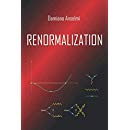We classify the unitary, renormalizable, Lorentz violating quantum field theories of interacting scalars and fermions, obtained improving the behavior of Feynman diagrams by means of higher space derivatives. Higher time derivatives are not generated by renormalization. Renormalizability is ensured by a “weighted power counting” criterion. The theories contain a dimensionful parameter, yet a set of models are classically invariant under a weighted scale transformation, which is anomalous at the quantum level. Formulas for the weighted trace anomaly are derived. The renormalization-group properties are studied.
Phys. Rev. D 76 (2007) 125011 | DOI: 10.1103/PhysRevD.76.125011
We prove the renormalizability of various theories of classical gravity coupled with interacting quantum fields. The models contain vertices with dimensionality greater than four, a finite number of matter operators and a finite or reduced number of independent couplings. An interesting class of models is obtained from ordinary power-counting renormalizable theories, letting the couplings depend on the scalar curvature R of spacetime. The divergences are removed without introducing higher-derivative kinetic terms in the gravitational sector. The metric tensor has a non-trivial running, even if it is not quantized. The results are proved applying a certain map that converts classical instabilities, due to higher derivatives, into classical violations of causality, whose effects become observable at sufficiently high energies. We study acausal Einstein-Yang-Mills theory with an R-dependent gauge coupling in detail. We derive all-order formulas for the beta functions of the dimensionality-six gravitational vertices induced by renormalization. Such beta functions are related to the trace-anomaly coefficients of the matter subsector.
Class. Quant. Grav. 24 (2007) 1927 | DOI: 10.1088/0264-9381/24/8/003
arXiv: hep-th/0611131
The infinite reduction of couplings is a tool to consistently renormalize a wide class of non-renormalizable theories with a reduced, eventually finite, set of independent couplings, and classify the non-renormalizable interactions. Several properties of the reduction of couplings, both in renormalizable and non-renormalizable theories, can be better appreciated working at the regularized level, using the dimensional-regularization technique. We show that, when suitable invertibility conditions are fulfilled, the reduction follows uniquely from the requirement that both the bare and renormalized reduction relations be analytic in $\varepsilon=D-d$, where $D$ and $d$ are the physical and continued spacetime dimensions, respectively. In practice, physically independent interactions are distinguished by relatively non-integer powers of epsilon. We discuss the main physical and mathematical properties of this criterion for the reduction and compare it with other equivalent criteria. The leading-log approximation is solved explicitly and contains sufficient information for the existence and uniqueness of the reduction to all orders.
J.High Energy Phys. 01 (2006) 077 | DOI: 10.1088/1126-6708/2006/01/077
arXiv: hep-th/0509196

 Quantum Gravity
Quantum Gravity 


